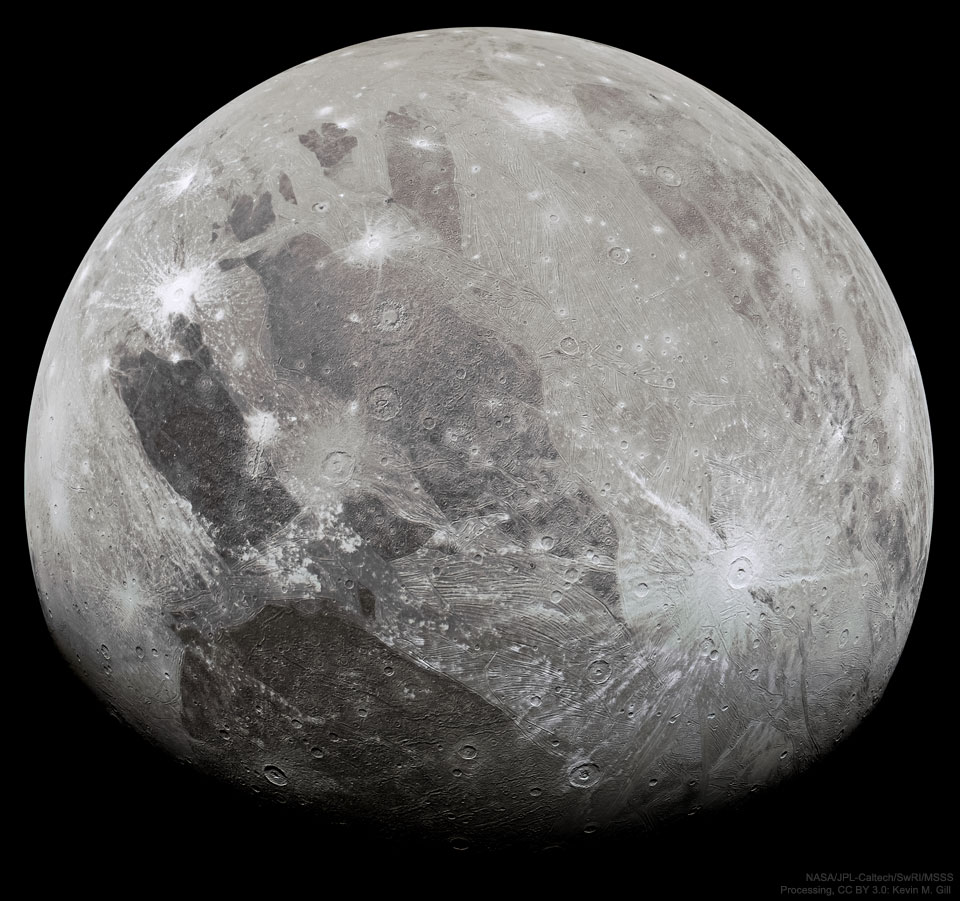2021年06月14日
Ganymede from Juno
Image Credit: NASA/JPL-Caltech/SwRI/MSSS; Processing & License: Kevin M. Gill;
Explanation: What does the largest moon in the Solar System look like? Jupiter’s moon Ganymede, larger than even Mercury and Pluto, has an icy surface speckled with bright young craters overlying a mixture of older, darker, more cratered terrain laced with grooves and ridges. The cause of the grooved terrain remains a topic of research, with a leading hypothesis relating it to shifting ice plates. Ganymede is thought to have an ocean layer that contains more water than Earth — and might contain life. Like Earth’s Moon, Ganymede keeps the same face towards its central planet, in this case Jupiter. The featured image was captured last week by NASA’s robotic Juno spacecraft as it passed only about 1000 kilometers above the immense moon. The close pass reduced Juno’s orbital period around Jupiter from 53 days to 43 days. Juno continues to study the giant planet’s high gravity, unusual magnetic field, and complex cloud structures.
Notable images submitted to APOD: Last week’s solar eclipse
Tomorrow’s picture: god of fire on mars
朱诺号影像:木卫三
影像提供: NASA/JPL-Caltech/SwRI/MSSS; 影像处理与授权: Kevin M. Gill;
说明: 太阳系最大的卫星长什么模样?木星比水星和冥王星还大的卫星木卫三,其冰冻表面散布着槽沟和突脊,上面满是较老、较暗的撞击坑,上头更叠着明亮且较年轻的撞击坑。它满是槽沟的原野是怎么形成的,目前仍是研究的题材,最可信的假说认为与移动的冰板块有关。据信木卫三有个含水量多于地球的海洋层,因此或许其内有生命。此外,类似地球的月亮,木卫三也是以相同的一面向着母行星─木星。这幅主题影像,是在上星期,当美国航太总署的朱诺号太空船,以大约1000公里的间距掠过这颗庞大卫星时所拍摄。这次近距飞越,使朱诺号绕行木星的周期从53天遽降到43天。朱诺号将持续探索这颗巨行星的强大重力场、不寻常的磁场、以及复杂的云结构。
提交给APOD的值得注意的图像:上周的日食
明日的图片: god of fire on mars







